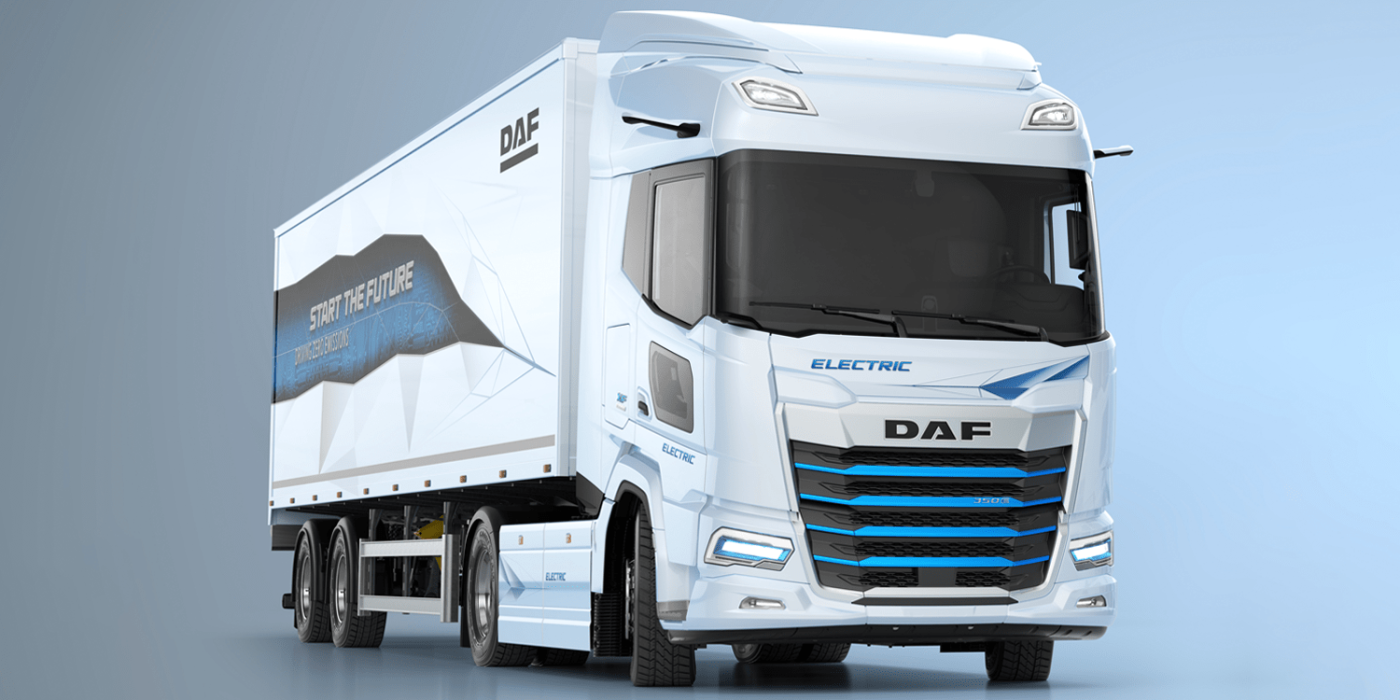EU Commission to allow greater truck weight for EVs
The EU Commission has presented new proposals to make freight transport by road and rail more sustainable. One point concerns the maximum weight for trucks. The Commission proposes an increase for e-trucks to account for their heavier batteries weighing in.
The EU Commission wants to revise the current directive that regulates the weights and dimensions of heavy commercial vehicles. Namely, to “allow additional weight for vehicles with zero-emission technologies, as these tend to increase the weight of a vehicle”, as it says in a statement. The Commission assumes that technological advances will make zero-emission trucks intrinsically lighter in the future, and thus “benefit from an additional payload in the longer term” through the now proposed regulation compared to diesel trucks.
One approach to making e-trucks lighter is more aerodynamic cabs that increase the efficiency of the drive. The commission wants to promote these and “other energy-saving devices” in the future. In addition, the panel advocates more clarity in cross-border traffic with heavier and longer vehicles, which are currently only allowed in some member states.
For transparency and better comparability of companies, the Commission proposes a common methodological approach to the calculation of greenhouse gas emissions by companies. “Reliable data on door-to-door emissions will enable operators to benchmark their services and allow consumers to make informed choices on transport and delivery options,” it says.
In rail, the Commission wants to optimise routes, improve cross-border coordination and thus attract more freight operators to rail. “Current rules on capacity management are decided annually, nationally and manually. This does not favour cross-border traffic (around 50% of rail freight crosses borders); the fractured approach leads to delays at borders. This, in turn, hinders the functioning of the Single Market. Delays due to congestion caused by uncoordinated maintenance work are also common,” the statement says. This is relevant, because about 50 per cent of rail freight traffic crosses the border.
The European Commission’s proposals will now be examined by the European Parliament and the Council in the course of the legislative procedure. “With today’s proposals, we take another step on the journey to sustainable transport,” said Frans Timmermans, the European Commission’s Executive Vice-President for the European Green Deal. “Every day, billions of goods are traveling on European roads and railway tracks, from harbours and customs points to shops and to our homes. Our proposals will help to get more zero-emission trucks on the road and make sure that this freight is handled in the most sustainable way possible, whether it travels by truck, train or barge.”
This is already the EU Commission’s second push in this area: in February, it announced its proposals on new CO2 standards for trucks and buses. According to the document, manufacturers of heavy commercial vehicles are to reduce their fleet emissions by 90 per cent by 2040, and city bus manufacturers by 100 per cent already by 2030. These proposals are also going through the legislative process and are before the other committees.
The initiatives are intended to contribute to a fundamental reduction of transport-related emissions by 90 per cent by 2050. This goal is part of the European Green Deal.





0 Comments